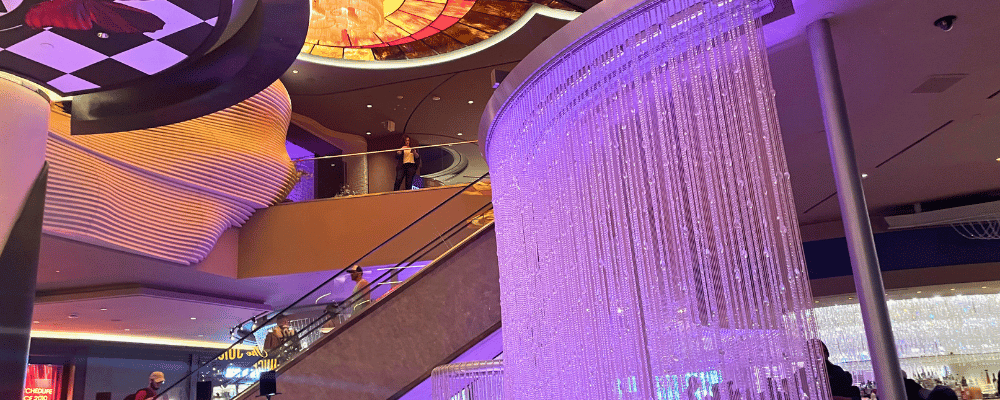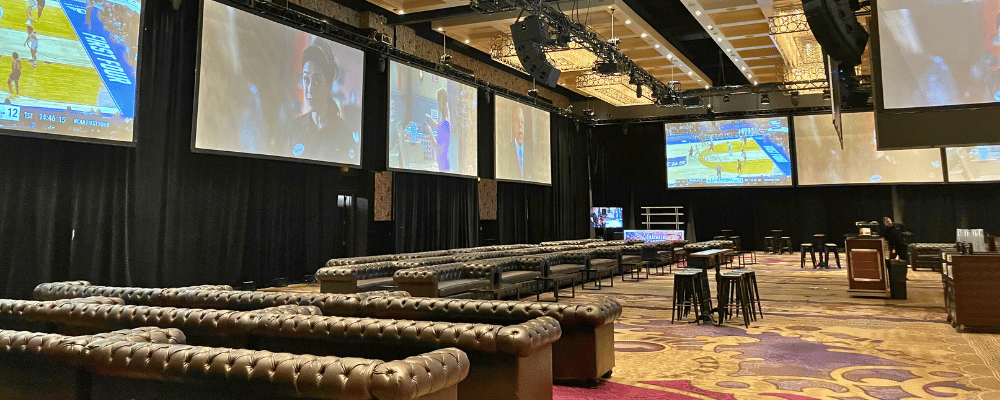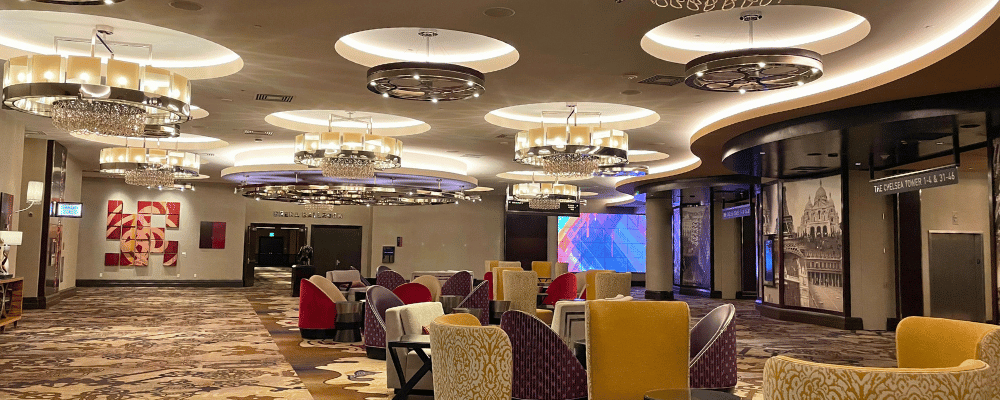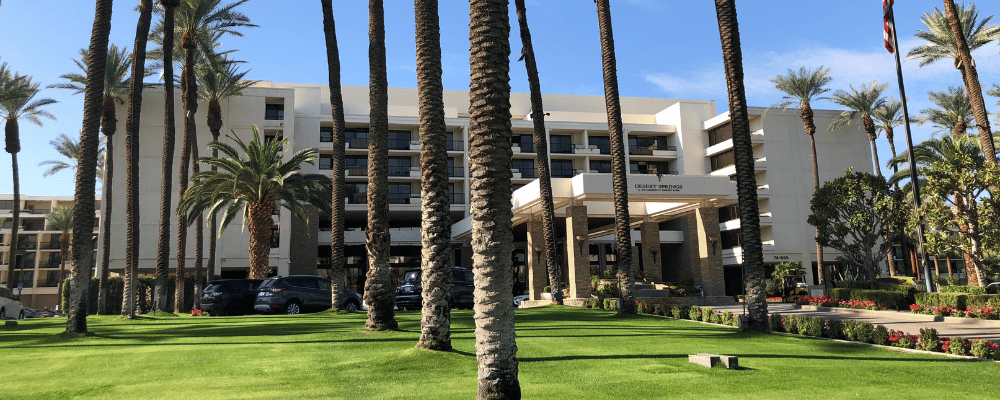You’ve completed your site visits and selected the perfect venue for your event. Now it’s time for a follow-up visit to kickstart the planning process.
We recommend conducting a secondary site visit to your chosen location so you can walk the space and plan out your event. Often, these visits can help you more clearly identify branding placement, envision your various spaces, and think through the attendee experience in more depth.
Here's what you need to know before you go.
The importance of a pre-planning site visit for event managers.
Your event agenda has probably evolved since your initial site visit, so it’s important to revisit your venue through a different lens.
During your pre-event site visit, you’ll want to take a closer look at the contracted space, focusing on the flow and how your event will unfold for attendees.
The best time to conduct your pre-planning site visit depends on your event date and when you start the planning process. Typically we conduct these site visits 6-8 months before the event.

Communicating with the venue’s CSM.
Initiate pre-planning calls with the venue’s client services manager (CSM) as soon as they are assigned to you.
The goal is to begin a communicative relationship with the CSM by providing them with insight into your event, your company's priorities, and the preferences of your company’s executives.
These discussions should take place before the on-site pre-planning visit. The last thing you want is for a CSM to talk to your team as if they don’t know anything about your event or program.
In some cases, your initial site selection visit may have happened over a year ago, so it’s important to work closely with your CSM to address any potential changes in layouts or unforeseen developments during that time.
Related: Want a smooth, stress-free conference next year? These 15 teams have the experience to back it up.
Bringing in key players.
Now is a good time to bring in the key players.
- For example, during a client's initial site visit to Vegas, only the client and our project manager were present.
- However, at the pre-planning site visit at the chosen venue, four members from the client's team, along with the A/V team and the project manager attended.
This allows everyone to ask questions within their areas of expertise and bring their unique perspective to the table.
For instance, if your A/V team accompanies you on your pre-planning visit, they can use their expertise to evaluate whether the general session space accommodates their requirements. Consider other factors such as ceiling height, room divisions, and pillars that may impact production.

Detailed planning discussions.
The pre-planning site visit is where you start hammering out the details of your event logistics. This includes everything from A/V setup and room arrangements to planning general sessions and breakouts.
During this stage, you'll need to:
- Visualize the logistics of how attendees move between rooms
- Consider how to incorporate F&B services into the experience
- Evaluate whether room divisions are necessary as your event agenda evolves
- Brainstorm potential adjustments with venue staff to address any logistical challenges
Another key aspect to consider during your pre-planning visit is the accessibility of the loading dock. You need to understand the specific rules and regulations governing the loading dock area and start building a direct line of communication with the loading dock manager.
Related: Looking to partner with the best event logistics agency? Here's a list of our top 10 picks to save you the hassle of researching.

Visualizing the event experience.
Walk through the venue as if you were an attendee, visualizing the complete event flow and experience.
Consider the registration process for attendees: when and where they will check in for the event. Think about how far the walk is from the hotel, parking lot, and nearby restrooms.
Start thinking through all the details that will come together as you plan your event, envisioning how the program will unfold in your selected venue. Below are some of the questions you should ask yourself and the venue’s CSM during your walk-through.
Event flow.
- Walk through the event from the front door as an attendee - what will their experience look like?
- Which doors will attendees use to enter based on the room setup?
- If there are breakouts, can attendees move through the foyer smoothly?
- Will the hallway space accommodate your group size?
- Can you guide XYZ people at the same time from the breakout rooms to the main meeting room within 10 minutes?
- If the answers to the above questions are no, how can you change up the space to make sure movement is fluid? What signage do you need?
Event room set-up.
- What will the room setup look like?
- How will the rooms/screens be arranged?
- Ensure that the questions above align with your agenda.
- What will the seating arrangement look like?
- How and where will the stage be set up?
- You can place the stage on the long wall or short wall, or sometimes you don’t have an option. Envision the orientation of the room and the different types of seating set-ups
F&B placement.
- Where does your food & beverage go if you’re having a big group of people filtering into the lunch area?
- What is the service style for your event (buffet, plated, packaged/to-go)?
- Do you need 2 buffets, 4, or more?
- Where is the best place to set up food stations for easy flow?
- Think about if your attendees need to grab their lunch quickly and then continue toward the meeting room.
Signage.
- Do you need directional signage to help guide attendees to the correct location?
- Do you need signage to navigate from registration to the meeting space?
- Will you need signage for breakfast, lunch, and dinner?
Branding.
- Where will branding go?
- Will there be branding as guests move from registration to the meeting space?
- Are there opportunities for branding on digital screens or monitors throughout the venue?
- This is a good time to talk to your venue and ensure that you have a clear understanding of all branding possibilities.
Transportation.
- If you’re doing group transportation, where will attendees get picked up and dropped off?
- Does the hotel have a separate drop-off area for large charter buses?
Registration.
- What does your registration experience look like?
- Where will the registration booths be located?
- Does the hotel assist with setting up a registration area or desk?

Stay the night and taste the food.
During your pre-planning site visit, you'll likely have the chance to stay overnight. We recommend taking advantage of this opportunity so you can get a feel for the hotel and what the attendee experience will be like.
Additionally, you may also have the opportunity to participate in a food-tasting session, which is important as you begin planning the F&B menu for the event. Here are some things to consider as you experience the hotel, staff, and food at your chosen venue.
Food.
- Does the hotel provide details about food allergies?
- Is the hotel flexible and accommodating with food allergies and dietary restrictions? Do they have any additional charges for special accommodations?
- Does the hotel treat you well during the food tasting?
- Aside from being delicious, is the food high-quality?
- What beverage options does the hotel offer?
- Are there snacks available for attendees after hours?
- Can the hotel accommodate last-minute changes or additions to the menu?
Amenities.
- Is the gym open late?
- What are the wifi options for guests? Can it be branded or sponsored?
- Are there any recreational activities available for attendees during downtime?
- Are there any partnerships or discounts available for local attractions, activities, or restaurants?
- Is the pool available?
- Can the hotel provide local recommendations for attendees who may be visiting from out of town?
Room.
- If you are staying the night, do they offer upgrades?
- Does the hotel offer amenities in your rooms? Are there any additional fees or charges for using them?
- What is the temperature when you arrive at the room? Is it hot and stuffy or cool?
- Can the room temperature be controlled?
- Are the walls thin? Can you hear people in the room next door?
- Does the wifi work well?
- Is the mattress/ furniture comfortable?
If you find that some aspects are not meeting your expectations, there are steps you can take to counter them. For example, if the room isn't comfortable, ask about room upgrades or additional amenities that may improve your experience. Even if you have already chosen the venue, proactive communication with the hotel staff can help address concerns and find potential solutions.

Utilizing a site inspection checklist.
The site inspection checklist serves a dual purpose and can be used for both the initial site visit and the subsequent pre-planning visit. However, during the pre-planning phase, certain aspects of the checklist require closer attention.
The pre-planning stage allows you to dive deeper into the logistics of your event, going beyond the initial checklist and providing valuable insights to guide your planning process.
Check out our article on the best site selection checklist for corporate event planners.
Click here for a printable version of the site selection checklist.




